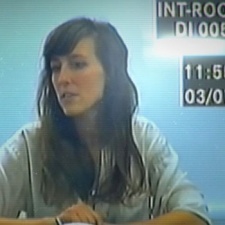Sam Barlow, creator of FMV detective mystery Her Story, has always been fascinated with the exploration of narrative in video games.
So when a stroke of luck saw him working on Silent Hill: Shattered Memories, he took the opportunity to leave his stamp. Barlow says Silent Hill is a series where storytelling is intrinsic - you're always given a protagonist with roots in the real world, and there's always conflict with their internal demons.
To get to that stage in his career, Barlow had his own internal battle.
When he began his career in games a decade ago, it was as an artist. To have that passion for storytelling bubbling under the surface while being completely focused on aesthetics must have been a struggle, but he soon jumped into a design role.
His first stint as lead designer wasn't so glamorous, however.
Crusty Demons of Dirt was a motocross stunt game made by a team of people who mostly had no interest in motocross. It received middling reviews, which is no surprise for a niche release created by a group of people with no interest in that niche.
In video games, like with most creative projects, passion can make all the difference.
Whose story?
"Silent Hill: Shattered Memories was the game where I got to put a lot of my ideas on screen and we had a pretty free reign to make something personal and special," reminisces Barlow.
"I guess that was the point where I admitted that all along I'd wanted to make this kind of game, to explore interactive narrative."
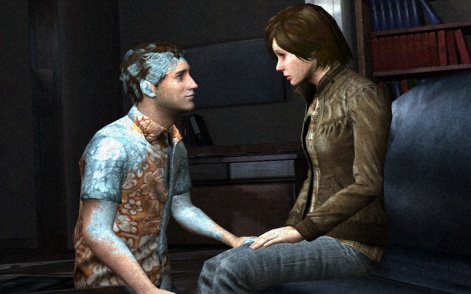
After Shattered Memories came another chance for Barlow to explore narrative when he got to work on a new game in the Legacy of Kain series.
Unfortunately that got cancelled, and it started to become apparent to Barlow that the story rich games he wanted to make just weren't as viable in the mainstream, big budget climate.
I was locked on the idea of doing a game about police interviews.Sam Barlow
So Barlow set off to work on his own project and the seeds for Her Story, a game where players have to scour through a database by searching for keywords and watching interview segments, were planted.
Reading his history you might think Barlow started with a story and wrapped a game around that for Her Story, but that wasn't the case.
"I was locked on the idea of doing a game about police interviews, but didn't know exactly what that meant," recalls Barlow.
"Then one day the two core ideas popped into my head as a combo - using real videos and accessing them through a database interface. That idea really zinged for me. It felt pretty complete and different.
"From there I fleshed it out and then started to work on the story - first doing a ton of research, then developing the story out of that and letting it take on a life of its own. This is generally how I work - first there's a hook, a structural thing, or a mechanic or twist no one has seen before.
That gets my brain working. Then I start to pull out the story and pretty soon that is the driver - the story and the characters becoming the key to the game."
The research phase meant Barlow picking through real cases, crime files and academic works that looked at the setup of a police interrogation.
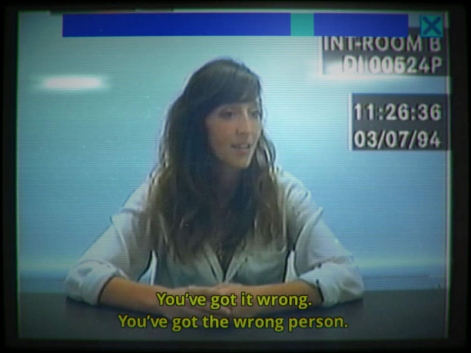
Among others, the Jodi Arias case, in which Travis Alexander was found murdered, sparked the idea to shift the player's perspective to that of the suspect instead of the cops - hence the lack of voices from the detectives behind the in-game camera.
This case also made Barlow think about the way female murder suspects were treated in the interrogation and the general discussion around the cases.
Women murderers are very much in the minority and so they tend to be fetishised.Sam Barlow
"Women murderers are very much in the minority and so they tend to be fetishised, more readily turned into archetypes," says Barlow.
"The question of appearances and the heightened difficulty of living an authentic life as a woman, especially over the last century... these things kind of felt like they were drawn to the surface in all these videos and cases, they informed some of the early ideas."
Some history
With the themes and core idea settled, there was just the small task of writing the massive script and finding the right actress to play it out. He already had someone in mind for the latter.
Sam Barlow had met Viva Seifert on the cancelled Legacy of Kain project where they had worked together for a year in rehearsals and shoots. Now she just had to learn 80 pages of dialogue and carry the whole game on her solitary performance. Easy.
"I knew how great Viva was, and that we worked well together," says Barlow.
"As I developed the story, I felt Viva would be perfect for it. She has a real talent for quickly, intuitively bringing the character out of the words and exposing the subtext, giving it emotional heft - she can do fairly subtle things but very precisely.
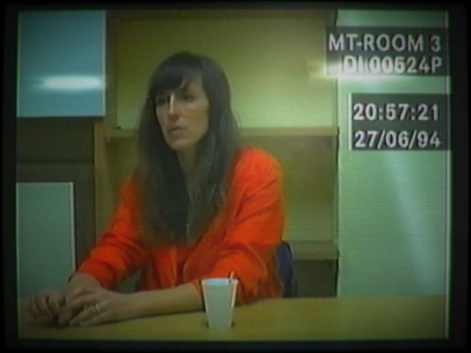
"These were all things that were going to be essential to pull off the game I was imagining. I reached out to Viva and asked if she wanted to work together again and gave her the high level pitch. She said yes before she'd realized quite how much work the role would entail."
After Seifert had somehow memorised the whole script, filming took place over a week, with the interview days filmed chronologically, Seifert changing costumes and mannerisms as each day went on.
This way she could react to the detective's questions in the order her character would have heard them, enhancing the illusion of a progressing interview.
We shot a movie's amount of footage in just a week.Sam Barlow
Of course, the drink props helped carry this progression visually to the player. Originally the character would smoke and the ashtray would fill up as the interviews progress - inspired by Barlow's love for film noir as a child - but modern smoking laws stamped that out.
"It was about creating a situation where Viva could just be in the moment and get on with it - it was as close to actually being stuck in an interrogation as we could get," recalls Barlow.
"It was gruelling and by the end of it, we were both ready to confess. We shot a movie's amount of footage in just a week and Viva had to carry the whole thing."
Well, not quite the whole thing. Barlow credits the modern gaming audience for some of Her Story's success. This is a story that needs to make sense from whatever angle players approach it, after all.
Open word gameplay
"We live in a world where we're so deeply surrounded by storytelling," explains Barlow.
"The audience today is the most story literate audience there has ever been. It's a real problem for writers in static media - if the audience has seen every twist and plot, how on Earth do you surprise them?
"For me this was a bonus, because the game relies on players having a clever story brain. I had a confidence that players would be able to put things together, no matter how broken up they were."
Barlow didn't even feel the need to nudge players to specific words when they're searching through the database of clips. Instead he focused on adding layers to the narrative and tucking away the odd secret.
A quirk was added into the database so that it could only show the first five clips associated with a word, too. This meant that the more revelatory stuff was saved until later, when players could pick out multiple words likely to appear in a later clip.
"Then I ran a lot of maths on it - so the computer told me if there were words that were over-used, or under-used, or clips that might be too easy or too hard to find," says Barlow.
"That let me go in and 'sculpt' things, make sure there was a good balance and shape to everything.
In this way, a lot of the 'flow' in the game comes from how language itself works, from the interconnectedness of the story itself and the way the character speaks.
"In real life, detectives play this game - they look out for the way the suspect speaks, certain words, it's very language-driven," Barlow says.
"So the mechanic felt very true to that original inspiration."
With filming wrapped up and the game's inputs fine tuned, it was just a case of coating it in an aesthetic style that suited the era, all clunky CRT monitors and VHS static. It could have been completely different, however, with Barlow originally planning to set the game in the modern day and using YouTube culture to drive the game.
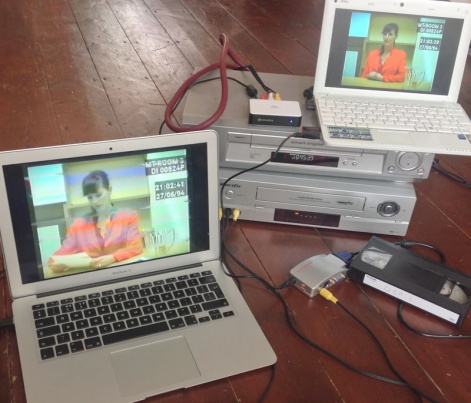
As he developed the story, though, he felt the themes and details felt slightly historical and Her Story sat more comfortably at the tail end of last century.
In the end, Barlow was so committed to this style that he would feed footage from a computer, through two VHS players and back into the computer with that authentic visual style intact
White noise
The same ethos went into sound design. "The sound was all about authenticity," says Barlow.
Not wanting it to sound clean like a TV show, he added ambient sounds, and used an old keyboard to provide effects for the 'fake computer world'.
"When they playback in game, there's stereo panning so the keys have the correct 3D position on the keyboard," he says.
The hard-drive also whirr and skip, evoking the sense of using an old PC in a police archive room.
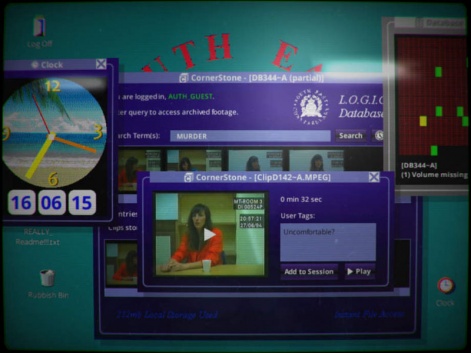
As for the game music, Barlow says it "highlights the gap between the authentic 'fake computer world', and the fact that you're playing a game".
"That's a delicate balance, but something I always push in my games," he adds.
"Giving the player little nudges out of the immersion is a useful way to spur their brain into trying even harder to maintain it. If you don't have that, then their brain is looking for things to break it and that can hurt your game more."
Top cop
All of these ideas combined to create a premium game ($5 on iOS, $6 on PC) that's been universally praised by critics.
Her Story recently passed 100,000 sales on iOS and PC ... proving that there's an audience for bold new ideas on both platforms.
Her Story recently passed 100,000 sales, which is far beyond Barlow's original projections. Of this audience, 40 percent are on mobile with the rest on PC, proving that there's an audience for bold new ideas on both platforms.
Barlow hopes figures like this will encourage other developers to aim for release on both PC and mobile.
For Her Story, making it work across platforms was relatively painless.
"Most of the effort went into working around the differences between the precision of a mouse in a simulated PC desktop vs the way a fingertip works on a touch screen," he explains.
"I developed first on iOS, so my pretend desktop system has a few Apple-esque features like only using single clicks, etc, to facilitate it. My interface was part Apple II, part Windows 3.1 and part Windows 98, so it all felt like it made sense.
"When I saw the iPhone version running properly for the first time I loved it. It was so dinky - I still get a bit of a kick seeing stuff running on small devices with such rich screens," he enthuses.
So now all that's left for Barlow is a well-earned rest - after some small bug fixes and an international tour of events, at least.
After that, all thoughts will be turned to his next project.
"I want to make something that will delight the people who loved Her Story, I really want to build on that," he reveals.
"It won't be a direct sequel or the same mechanic, but I'm hoping to repeat the same core ingredients: accessibility, respecting players' imagination and intelligence, and the kinds of characters and stories you don't see so much in games. Watch this space!"
You can buy Her Story for iPhone and iPad, priced $4.99 here.

